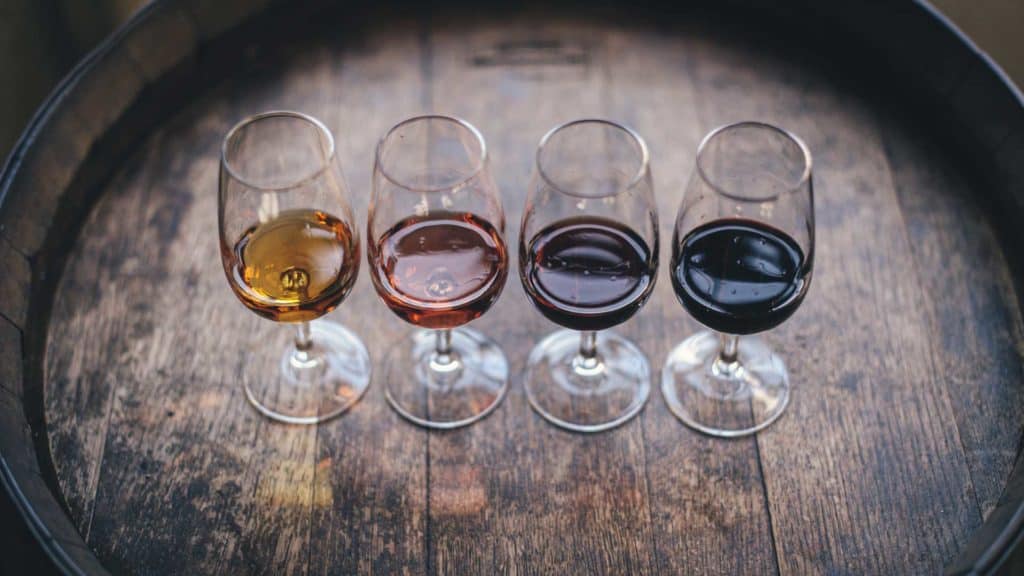
Besides, evaluating wine by shades is as simple as picking any wine and looking at its color. Based on the color, you can tell the variety of grapes, ingredients, and age of the wine.
Observing wine will tell you whether it lacks a balance of essential elements, or it’s a rich wine. The basic rule of the thumb is that if the color of the wine is deep, then it is rich.
When it comes to drinks, the alcoholic content matters a lot, and picking a drink should be according to your expectations.
Wines are suitable for moderate consumption, but if you want a more potent alcoholic drink option, then you can go for grain alcohol.
Red Wine
Colour intensity is one of the basic characteristics you use to identify red wine. It could range from very pale with little pigment or be so dense that it will stain the side of the glass.
One of the aspects that give red wine a dense color is extracting it from pigments closer to the skin of the grapes. The longer the skin keeps contact with the juice, the darker it becomes. Some seeds and stems also increase color intensity.
Red wine is a good wine for just about any occasion and at any time of the year. Some of the shades of red wine include Pinot Noir, Gamay, and Tempranillo.

White Wine
Let’s make something clear. White wine doesn’t have to be pure white. The range of white wine can be anything from pale yellow to golden.
The end product depends on both the kind of grapes used in wine production and the process. White grapes that produce white wine may be greenish or yellowish.
They have the potential to make a range of flavors such as tangy, creamy, light, zesty, and many more depending on the winemaker. Good examples of renown white wines include Sauvignon Blanc and Moscato
Rose Wine
Rose wine makes a perfect drink to sip from a serene park or at your backyard as you feast on a delicious barbecue.
Unlike white and red wine, which comes expressly from the grapes with distinct colors, rose wine has a slightly different process. It comes from the red grapes that remain after extracting the juice and allowing them to soak with the grape skins for a very short period.
This could be one or two days. Within this time, the lovely pink color will have started to form. Separation of the skin from the juice to allow fermenting follows.
Rose wine is quite an envy of many winemakers and wine lovers in general. The main shades of rose wine are Pinot Noir, Grenache, Merlot, and Malbec.
Blue Wine
Blue wine is rather a project borne out of curiosity and one of the recent discoveries to hit the wine world. Spanish-based winemakers introduced the world to blue wine in an attempt to defy all odds. It’s now popularly known as Gik and sold in several parts of the world.
The winemakers say that by fermenting a variety of grapes that have two pigments and a certain flower, the liquor takes on a blue color. It is finally enhanced with zero-calorie sweeteners to achieve the distinct dessert-wine flavor.
Orange Wine
Orange wine gets its color through the production process and, to demystify a popular conception, not from fermenting orange fruits.
Orange wine is also technically known as skin-contact wine because the color is determined by the period the juice stays in contact with the grape skins.
Colors can range from yellowish-gold to bright orange. Although orange wine has surged in popularity, it has been in existence for a long period and enjoyed in places such as Italy, Slovenia as well as Croatia.
Different varieties of grapes will give different results in terms of how orange wine tastes. Nonetheless, orange wine is reputable for its refreshing effects and versatility. Its lengthy period with grape skin gives it a relatively deep flavor.
Conclusion
The color of wine tells a lot about the flavor and grape variety. If you want to be a wine expert, then you should be able to tell the difference between different types of wines just by holding them against the light. Wines fall into different categories depending on their color, flavor, and aroma.
Apart from the color, you can tell more about the shades of wine by engaging other senses, which are taste, and smell.
You can gauge the quality of the wine by knowing its taste. A good wine gives a pleasant feeling in your mouth.



